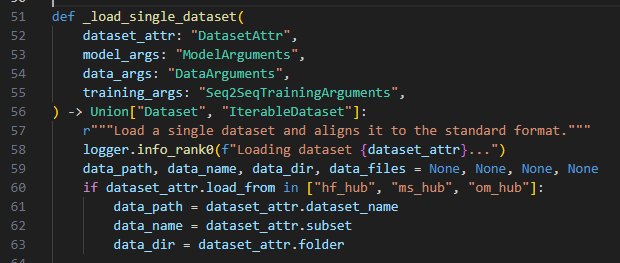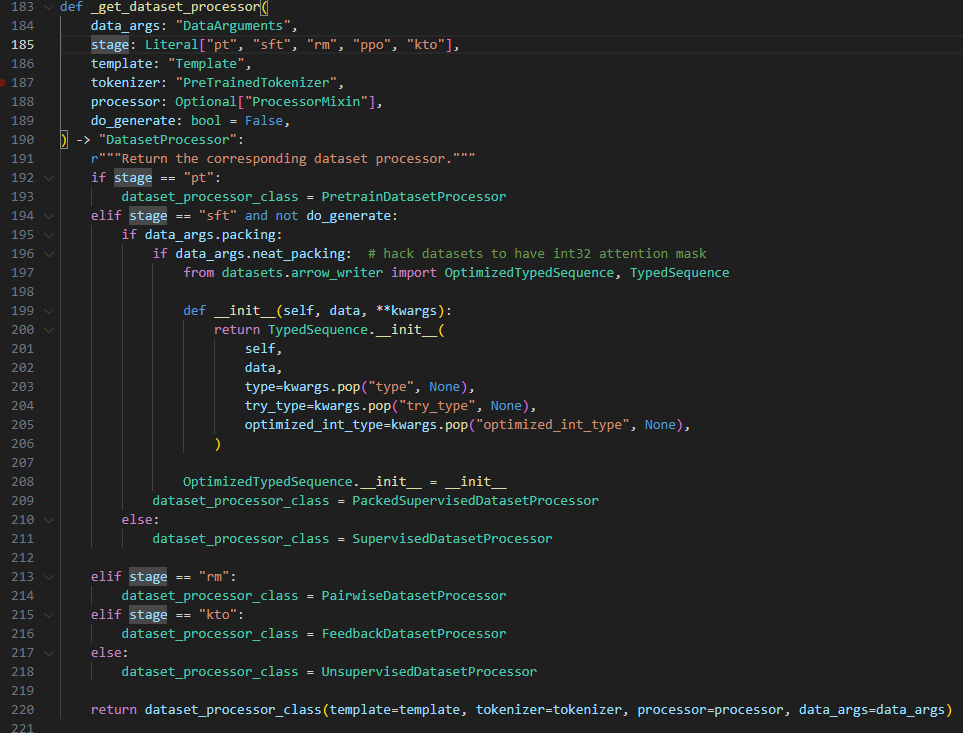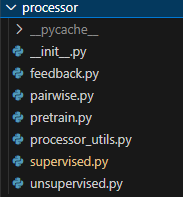1
2
3
4
5
6
7
8
9
10
11
12
13
14
15
16
17
18
19
20
21
22
23
24
25
26
27
28
29
30
31
32
33
34
35
36
37
38
39
40
41
42
43
44
45
46
47
48
49
50
51
52
53
54
55
56
57
58
59
60
61
62
63
64
65
66
67
68
69
70
71
72
73
74
75
76
77
78
79
80
81
82
83
84
85
86
87
88
89
90
91
92
93
| @dataclass
class SupervisedDatasetProcessor(DatasetProcessor):
def _encode_data_example(
self,
prompt: list[dict[str, str]],
response: list[dict[str, str]],
system: Optional[str],
tools: Optional[str],
images: list["ImageInput"],
videos: list["VideoInput"],
audios: list["AudioInput"],
) -> tuple[list[int], list[int]]:
messages = self.template.mm_plugin.process_messages(prompt + response, images, videos, audios, self.processor)
input_ids, labels = self.template.mm_plugin.process_token_ids(
[], [], images, videos, audios, self.tokenizer, self.processor
)
encoded_pairs = self.template.encode_multiturn(self.tokenizer, messages, system, tools)
total_length = len(input_ids) + (1 if self.template.efficient_eos else 0)
if self.data_args.mask_history:
encoded_pairs = encoded_pairs[::-1]
for turn_idx, (source_ids, target_ids) in enumerate(encoded_pairs):
if total_length >= self.data_args.cutoff_len:
break
source_len, target_len = infer_seqlen(
len(source_ids), len(target_ids), self.data_args.cutoff_len - total_length
)
source_ids = source_ids[:source_len]
target_ids = target_ids[:target_len]
total_length += source_len + target_len
if self.data_args.train_on_prompt:
source_label = source_ids
elif self.template.efficient_eos:
source_label = [self.tokenizer.eos_token_id] + [IGNORE_INDEX] * (source_len - 1)
else:
source_label = [IGNORE_INDEX] * source_len
if self.data_args.mask_history and turn_idx != 0:
target_label = [IGNORE_INDEX] * target_len
else:
target_label = target_ids
if self.data_args.mask_history:
input_ids = source_ids + target_ids + input_ids
labels = source_label + target_label + labels
else:
input_ids += source_ids + target_ids
labels += source_label + target_label
if self.template.efficient_eos:
input_ids += [self.tokenizer.eos_token_id]
labels += [self.tokenizer.eos_token_id]
return input_ids, labels
def preprocess_dataset(self, examples: dict[str, list[Any]]) -> dict[str, list[Any]]:
model_inputs = defaultdict(list)
for i in range(len(examples["_prompt"])):
if len(examples["_prompt"][i]) % 2 != 1 or len(examples["_response"][i]) != 1:
logger.warning_rank0(
"Dropped invalid example: {}".format(examples["_prompt"][i] + examples["_response"][i])
)
continue
input_ids, labels = self._encode_data_example(
prompt=examples["_prompt"][i],
response=examples["_response"][i],
system=examples["_system"][i],
tools=examples["_tools"][i],
images=examples["_images"][i] or [],
videos=examples["_videos"][i] or [],
audios=examples["_audios"][i] or [],
)
model_inputs["input_ids"].append(input_ids)
model_inputs["attention_mask"].append([1] * len(input_ids))
model_inputs["labels"].append(labels)
model_inputs["images"].append(examples["_images"][i])
model_inputs["videos"].append(examples["_videos"][i])
model_inputs["audios"].append(examples["_audios"][i])
return model_inputs
def print_data_example(self, example: dict[str, list[int]]) -> None:
valid_labels = list(filter(lambda x: x != IGNORE_INDEX, example["labels"]))
print("input_ids:\n{}".format(example["input_ids"]))
print("inputs:\n{}".format(self.tokenizer.decode(example["input_ids"], skip_special_tokens=False)))
print("label_ids:\n{}".format(example["labels"]))
print(f"labels:\n{self.tokenizer.decode(valid_labels, skip_special_tokens=False)}")
|


